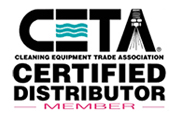During the winter months, construction crews in Seattle can experience weather types ranging from sleet and rain to snow and wind. On occasion, these storms can cause power outages. For some construction managers, a power outage means they can’t work. However, new products, such as generators, allow crews to carry on their work despite the cold weather.
While outdoor power sources can save you quite a bit of time on a construction site, you should make sure you use your generator correctly. Improper use of a generator can lead to risks such as electric shock or carbon monoxide poisoning.
Below, we’ve listed three tips so you can safely use your generator on your construction site.
- Find a Safe Location
Where you position your generator is important. You should choose an area that ensures proper ventilation for the exhaust. Place your portable generator in an area that allows the exhaust to escape freely. The Centers for Disease Control and Prevention recommends placing the unit at least 20 feet from vents, windows, and doors. Never run a generator indoors, the carbon monoxide can cause serious if not deadly health problems.
- Avoid Electric Shock Hazards
During a storm, you may need to connect electrical cords to your generator. Working on your generator during rain or snow can be extremely dangerous. Keep the generator away from wet areas, as the moisture may cause electrocution or shock. Avoid places such as pools of water or piles of snow on the ground.
If you need to adjust your generator in wet conditions, place the machine in a dry area, like under a canopy. Make sure the area has proper ventilation and won’t accumulate pools of water. You should also try to elevate the generator off the ground if possible.
Once you have properly placed your generator, double check that the unit is off. Never plug power cables or extension cords into the system while it is running.
Refer to your owner’s manual to make sure you properly ground your generator and to address any other concerns regarding electric shock.
Additionally, you can avoid the need for extension cords by using an inlet box and transfer switch instead. This system allows you to run essential circuits through a power cable that connects the generator to the inlet box. The inlet box and transfer switch can run a heating device and isolate the electric system to reduce your risk for shock.
- Install Carbon Monoxide Alarms for Indoor Areas
Depending on where you are in the construction process, you’ll also need to consider generator safety in enclosed areas. Make sure each work area has an up-to-date carbon monoxide detector. This device will protect your workers from carbon monoxide leaks on your site.
Remember that even if doors and windows are open, the carbon monoxide exhaust may not escape quickly enough.
If your work site is in a residential area, keep in mind that the exhaust from your generator could also affect neighboring houses. Position your generator away from nearby houses so that the exhaust won’t flow towards these buildings.
Even when you do take precautions, you should still watch for signs of carbon monoxide poisoning. Symptoms of this condition include:
- Dizziness
- Fatigue
- Headaches
- Nausea
- Shortness of breath
If you or a crewmember shows signs of poisoning, immediately turn off your generator and call for medical assistance.
If used correctly, your generator can keep your work site up and running no matter what weather troubles you experience. Make sure you prepare ahead of time to avoid dangerous situations by implementing the tips above.
You can also check out the rest of our blog for more information about any commercial equipment you might use on your work site.

